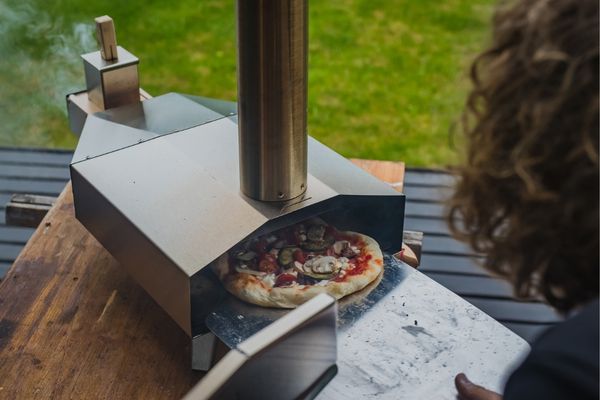The Essential Qualities of the Best Cooking Wood
So, you want to have an enjoyable time cooking with wood. Here’s the thing: you’re probably not going to have as much fun or get the delicious results you’re looking for if you’re not using the best wood.
We know what you might be thinking: “Why does it need to be the best cooking wood? Isn’t wood just the heat source? Shouldn’t I focus my energy on cooking with the best ingredients?”
If that’s you, then we’ve got news for you: The wood you use is just as important as the rest of the ingredients. In fact, we consider high-quality wood an essential ingredient for excellent cooking.
Why do we place such a high value on wood for cooking? It’s because the best cooking wood has three qualities that will elevate any dish you create with it. These three crucial characteristics are:
- Kiln-dried to the Ideal moisture content
- Strategically sized for your oven, grill or smoker
- Sourced from hardwood trees
Below we’ll explore why each of these qualities is so important.
Kiln-Dried to the Ideal Moisture Content
One of the most common roadblocks to having a great time while cooking on wood is struggling to start and maintain a good fire. This struggle occurs when the wood contains too much moisture.
The ideal moisture content for top cooking wood performance is below 20%. Above this threshold, the wood is much more difficult and frustrating to ignite. But the struggle doesn’t end once you get it going. Instead, the excess moisture in the wood keeps it from fully combusting, which leads to less heat and more dirty smoke and creosote emissions. So, it’s definitely not wood you want to cook your food over!
Kiln-dried cooking wood does not have these problems. Rather, the process of drying the wood in a kiln guarantees the wood will always have a moisture content below 20%. As a result, it lights easier and burns hotter and cleaner for a superior cooking experience. Plus, the kiln-drying process kills off any bugs, mold or pests that may have been lurking in the wood. So, you can rest assured that you’re cooking over the driest, cleanest wood possible.
Because of this, we have no doubt that kiln-drying is the best drying method available for producing gourmet-quality wood.
Strategically Sized for Your Oven, Grill or Smoker
As an aspiring wood-fired chef, you have a lot of work to do when preparing to cook. Chopping up ingredients can take it out of you. So, the last thing you want is to have to chop up your wood, too. But that’s probably what you’ll end up doing if you get standard-sized, 12-16-inch firewood for your cooking.
The problem with full-sized firewood is it rarely fits in the portable pizza ovens, grills and smokers that people typically use in their backyards. For example, if you have an Ooni Karu 12 pizza oven, then you know that the opening is far too small for even a 12-inch log to fit along with your pizza.
So, what’s a home chef with a small grill to do? The good news is you don’t have to break out the ax. Instead, you can find the right size wood for your needs!
Here at Hot Box Cooking Wood, we sell cooking wood in two optimal sizes for cooking. We have 6-inch extra-split wood that fits perfectly in portable pizza ovens and 8-inch logs that work great in smokers. You can learn more about each of these sizes and how to best use them in the sections below.
Sourced From Hardwood Trees
People often ask us what type of wood is best for cooking, and we can understand why. After all, there are many wood species out there, from oak to ash to pine to spruce—the sheer number of choices can be overwhelming!
So, we want to simplify things for you. An easy way to determine whether a type of wood is good for cooking or not is to find the answer to this question: Did the wood come from a tree that loses its leaves in the winter? If it did, then that wood is going to give you a great cooking experience because it’s a type of hardwood.
What’s great about hardwood species is that they’re very dense and contain minimal sap or resin. The high density provides more material for the fire to consume, which makes for prolonged burns that produce a lot of heat. And because the wood contains minimal sap and resin, it burns efficiently with clean smoke that won’t sour your food.
Some of our favorite hardwood species for cooking include ash, cherry, hickory, oak and sugar maple. You can learn more about the best uses for each of these types in the “Getting to Know the Best Species of Cooking Wood” section below.




